
Publisher:
Bonnie King
CONTACT:
Newsroom@Salem-news.com
Advertising:
Adsales@Salem-news.com

~Truth~
~Justice~
~Peace~
TJP
Jul-30-2006 00:28

 TweetFollow @OregonNews
TweetFollow @OregonNews
List of Oregon's Worst 100 Invasive Species Updated
Salem-News.com Agriculture ReportState agriculture officials want to spread the word and keep the problematic species out of Oregon.
 Photos: utexas.edu, abc.net.au, paghat.com, biosecurity.govt.nz, jjphoto.dk, forestryimages.org, usda.gov |
(SALEM) - Alder root rot, Paterson's curse, imported fire ant, and now an aquatic plant commonly called rock snot. The unattractive names match the insidious nature of their existence as part of Oregon's annual list of the 100 most dangerous species threatening to invade the state.
An updated version of the list has been released by the Oregon Invasive Species Council so that Oregonians will know a little bit more about the types of organisms knocking at the door.
"These are species that have established and are harmful in other places with environments similar to Oregon's," says Dan Hilburn, administrator of the Oregon Department of Agriculture's Plant Division, and member of the Invasive Species Council.
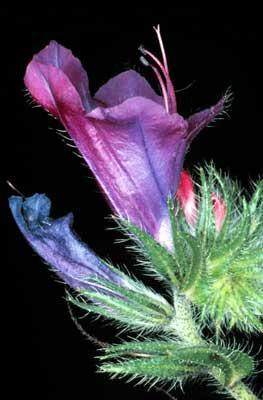 "These are species not yet established in Oregon and we want to keep them out. We want to focus on exclusion, early detection, and eradication of those things that can be eradicated. The species on this list of 100 can still be eradicated if found in Oregon."
"These are species not yet established in Oregon and we want to keep them out. We want to focus on exclusion, early detection, and eradication of those things that can be eradicated. The species on this list of 100 can still be eradicated if found in Oregon."
The Invasive Species Council coordinates public and private sector activities on unwanted, non-native species, and has issued its list of the 100 most dangerous invaders for the past four years. The list is helpful to agencies, landowners, environmental groups, industry and the general public, and could easily contain thousands of invasive species, but is confined to the worst of the bad actors worthy of focus from all Oregonians.
With limited resources available to battle such species, the council wants to create an awareness of high priority organisms to exclude from Oregon. The list includes mammals, birds, insects, weeds, microorganisms, and more.
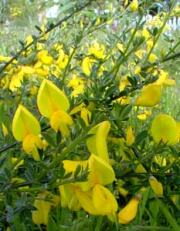 It's too late to get rid of Himalayan blackberry, Scotch broom, or many other non-native species that have flourished in Oregon.
It's too late to get rid of Himalayan blackberry, Scotch broom, or many other non-native species that have flourished in Oregon.
"We are looking to prevent the next Himalayan blackberry or Scotch broom," says Hilburn. "When it comes to battling invasive species, the best bang for the buck is keeping them out."
It would not be hard to create a longer list of species that threaten Oregon, but the council wants to zero in on the 100 worst. The list does not rank the species, as they are all high priority.
Getting off the list is more difficult than getting on. New threats emerge each year, but only a few are worthy of bumping listed species. This year, three such invasive species have cracked the top 100.
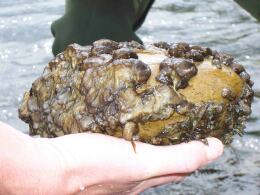 One of the new species has the scientific name of Didymosphenia geminate but has the unattractive common name of rock snot.
One of the new species has the scientific name of Didymosphenia geminate but has the unattractive common name of rock snot.
One look at its yellowish-brown slimy appearance explains the origin of the name. The microscopic, single-celled aquatic plant thrives in cold water.
When millions of these tiny organisms collect, they form impenetrable mats that can cover miles of stream bottom, choking out native plants and animals, and disrupting the food chain. That threatens the biodiversity so important to creeks, streams, and headwaters of rivers.
The organism has yet to be detected in Oregon, but has been found in all its neighboring states. It is of particular concern right now to New Zealand.
"The jury is still out on this organism," says Mark Sytsma, director of Portland State University's Center for Lakes and Reservoirs and council member. "No one knows where the new, aggressive form of this algae came from. We do know it can dramatically alter habitat quality in a stream.
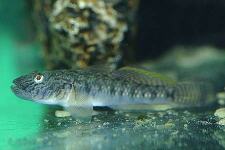
The thought is it spreads on fishing gear, particularly felt-soled waders. We have seen the same thing with the spread of New Zealand mud snails and whirling disease. It reinforces the importance of making sure gear is cleaned and dried after each use."
Another species added to the list is Amur goby (Rhinogobius brunneus), a small predatory fish recently detected in neighboring Washington. The invasive fish is especially threatening to salmon eggs.
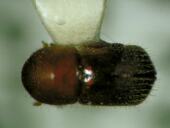 The third added species is Xylosandrus crassiusculus, better known as granulate ambrosia beetle. The tiny wood-boring beetle is established in the southeast United States, but was discovered in The Dalles in 2004, leading to ODA spray projects last year and this year that appear to be keeping the pest from establishing in Oregon.
The third added species is Xylosandrus crassiusculus, better known as granulate ambrosia beetle. The tiny wood-boring beetle is established in the southeast United States, but was discovered in The Dalles in 2004, leading to ODA spray projects last year and this year that appear to be keeping the pest from establishing in Oregon.
The beetle attacks more than 200 species of trees and shrubs– many of which are common in Oregon.
Three species have come off the list of 100 most dangerous invaders to Oregon. Japanese oyster drill, an aquatic invertebrate, has already established in a couple of Oregon estuaries but seems to be a minor pest that can be controlled.
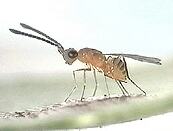 Two insect species– blueberry maggot and glassy-winged sharpshooter– remain potentially serious pests of agricultural commodities but don't appear to be a threat to Oregon's natural environment. Both have been removed from the list.
Two insect species– blueberry maggot and glassy-winged sharpshooter– remain potentially serious pests of agricultural commodities but don't appear to be a threat to Oregon's natural environment. Both have been removed from the list.
Once again, the Invasive Species Council would like to use the list of 100 worst invasive species as a public education tool.
"It's important for the public to realize there are a lot of species, if established, that would be harmful to Oregon," says Hilburn. "Oregonians need to keep their eyes open for things that are new and different, and report them when they see them. That way, the proper experts can identify the species and deal with it."
The general public continues to make use of a special invasive species hotline (1-866-INVADER) that receives several dozen phone calls a month from Oregonians who see something they don't think belongs. The reports are farmed out to the appropriate agency for followup. The public can also view the entire list of the 100 worst invasive species by going online at <http://oregon.gov/OISC/list_100_worst.shtml>.
At the end of the year, the Invasive Species Council will issue its annual report card which includes a letter grade on how Oregon is doing in the battle against unwanted exotic species. Much of the grade is based on the state's success at keeping the 100 worst invaders from creating a home in Oregon.
Last year's grade was an "A-minus", the highest grade ever issued by the council. Despite limited resources to fight the bad organisms, the council and its member agencies hope to maintain, if not raise, that grade in 2006.
Articles for July 29, 2006 | Articles for July 30, 2006 | Articles for July 31, 2006


Salem-News.com:
googlec507860f6901db00.html


Terms of Service | Privacy Policy
Comments are Closed on this story.
[Return to Top]
©2025 Salem-News.com. All opinions expressed in this article are those of the author and do not necessarily reflect those of Salem-News.com.